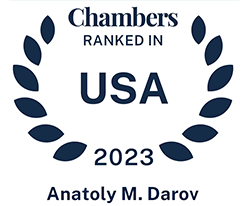This article was originally published in Spring 2018 issue of Under Construction, the Newsletter of the ABA Forum on Construction Law.
Over the past two decades, the use of third-party owner’s representatives has been steadily growing in all segments of the construction industry. Given their central role on the owner’s side of the project table, owner’s representatives have a significant and direct impact on the success or failure of a project. This article discusses the role of owner’s representatives as well as legal and practical considerations owners and their counsel should be aware of when selecting and contracting with these consultants.
Growing Need for Project Advisory Services. The reasons for increased use of third-party owner’s representatives are likely driven by a combination of the growing technical complexity and economic risk associated with modern construction projects, the evolution of new and more complex project delivery methods, and increased specialization of design professionals who have historically served the role of owner’s representative. Both private owners and public-sector awarding authorities are retaining project advisors to supplement their internal management and administrative capabilities and address gaps in services rendered by the design professional, commissioning agent, and construction contractor.
On public projects, use of owner’s representatives is proscribed by law in many states and local jurisdictions. See, e.g., MGL c. 149, Section 44A1/2 (requiring the use of an ‘owner’s project manager’ on all Massachusetts public building projects over $1.5 million); MGL c. 30, Section 39M1/2 (requiring the use of an ‘owner’s representative’ on all state public works projects over $50 million). Where use of owner’s representatives remains discretionary, owners must consider whether they have the internal capabilities and resources to successfully manage the construction process and whether the additional expense of the owner’s representative will have a positive impact on the schedule, cost, and/or quality of the project.
Understanding the Terminology When evaluating the role of owner’s representatives, it’s important to understand the range of terminology used to describe these consultants. Owner’s representative, project manager, program manager, tenant representative, and construction manager agent/advisor are used seemingly interchangeably to refer to the individual or firm tasked with representing the interests of the owner throughout the duration of the project. This terminology is not only confusing but lends itself to misunderstandings about the scope of authority held by these consultants and their scope of services—both of which may vary significantly from project to project.
This lack of consistency in scope, terminology, and authority can create significant risk for the owner and the owner’s representative. Historically, services undertaken by owner’s representatives were thought to present little in the way of professional liability or contract performance risk. However, as owner’s representatives have become more commonplace, and their impact on project administration, performance, quality, budgeting, and scheduling has become better understood, their roles have garnered more attention when things go wrong. Additionally, owner’s representatives have largely been successful in expanding their scope of services to sell more services to their clients, which has exposed them to additional risk and liability.
Broad Range of Services The ‘basic’ scope of services assigned to the owner’s representative is centered on project management, coordination, facilitation, oversight, and monitoring during the design, procurement, and construction phases of a project. For example, Massachusetts law requires all public building projects over $1.5 million to engage an ‘owner’s project manager’ for a minimum scope of services that includes:
- providing advice and consultation with respect to design, value engineering, scope of the work, cost estimating, general contractor and subcontractor prequalification, scheduling, and construction;
- selection, negotiation with, and oversight of a designer and a general contractor;
- ensuring the preparation of time schedules which shall serve as control standards for monitoring performance of the building project; and
- assisting in project evaluation.
MGL. c. 149, Section 44A1/2. Under this minimum scope of services, the owner’s representative works alongside the design professional and construction contractor to observe, report, advise, and coordinate the progress of the work throughout the project lifecycle. Importantly, the owner’s representative does not undertake primary responsibility for design or construction-related tasks typically assigned to the design professional and contractor. However, owner’s representatives may—and often do—take on additional roles and responsibilities that may overlap or conflict with other project participants.
At the opposite end of the project advisory spectrum lies the construction manager as agent/advisor. Like the owner’s representative role, the CM advisor is a fee-based consultant to the owner and does not directly hold design or construction contracts. However, the scope of services for a CM advisor is significantly different than a typical owner’s representative agreement because the CM advisor has overlapping responsibilities shared with the design professional and contractor and is authorized to make important project decisions for the owner.
AIA publishes a suite of CM agent/advisor contract documents that contemplate the CM advisor acting as consultant to the Owner during the duration of the project and jointly administering the project with the design professional. The AIA C132-2009 Standard Form of Agreement between Owner and Construction Manager as Advisor describes the expanded scope of services assigned to a CM advisor under the AIA model documents. Under the AIA C132-2009 agreement, the CM advisor provides recommendations to the owner relating to project delivery methods, contractor scopes of work, and cost estimates. AIA C132-2009, Sections 3.2.3, 3.2.4. The CM advisor provides cost estimating services throughout the duration of the project and may provide advice regarding constructability, availability of materials, construction sequencing, schedule impacts of alternative construction methods, and other issues. Id., Sections 3.2.3-3.2.5. The CM may also advise regarding selection of materials, building systems, and equipment and continuously update the project schedule and cost estimates. Id., Section 3.2.5, 3.2.7.
Despite the CM advisor’s expanded obligations, the CM advisor does not ultimately guarantee the outcome of the project. The CM advisor is obligated to “endeavor to obtain satisfactory performance” from each of the contractors hired by the owner. Id., Section 3.3.9. Notably, the CM advisor has the authority to reject work not conforming with requirements of the contract documents without prior consultation with the owner. Id., Section 3.3.14. The CM advisor is also obligated to prepare the certificate of substantial completion, which is executed by both the CM advisor and the architect, as well as coordinate and evaluate the completion of the work. Id., Section 3.3.25. In addition to the AIA C132-2009 form of contract, the AIA also publishes the AIA C172-2014 Standard Form of Agreement between Owner and Program Manager which is premised on a program manager who does not share any responsibilities with the project architect or have any authority to act on behalf of the owner.
Considerations for Contracting with Owner’s Representatives
Given the wide spectrum of services that may be provided by an owner’s representative, what are the important considerations for owners when retaining these consultants and structuring their contracts? Here are several important considerations:
(i) Professional Services. Many owner’s representatives, particularly those coming into the business from other segments of the construction industry (either design, construction, trade contractor, management, or even legal backgrounds) sometimes fail to recognize that owner’s representatives provides professional services—in other words those services requiring specialized knowledge, judgement and skill. Accordingly, the owner’s representative must render their professional services in conformance with the applicable standard of care and carry adequate professional liability insurance coverage.
(ii) Adequate Qualified Staff. Because owner’s representatives are generally tasked with tracking, monitoring, and evaluating every aspect of the project and project team, a successful owner’s representative should have a thorough understanding of a broad range of technical, administrative, and contractual issues—as well as an effective communication style. Owners should thoroughly interview and check multiple references on key staff proposed for the project and secure contractual commitments that those individuals will be on job until completion. Furthermore, owner’s representatives should possess a high degree of competency not only with traditional project management and administration processes and methods, but they should also be well-versed in the issues associated with building information models, computer-based schedule programs, web-based file management and information systems, and other engineering and construction technology tools being used by sophisticated design and construction firms. Owners engaged in large-scale projects that lack in-house project management capabilities will rely on the third-party owner’s representative to understand, manage and utilize these tools during the project, and post-occupancy, but not all owner’s representatives have the resources and skills to effectively utilize such systems and advise the owner on their proper implementation.
(iii) Scope and Authority. Crafting the appropriate scope of services to meet the needs of the owner and align with the professional and technical skill of the owner’s representative is critical to success. Unless the owner’s representative has a demonstrated competency in areas such as cost estimating, constructability reviews, development consulting, permitting, A&E services, and project financing, they should not be tasked with such responsibilities. Allowing an owner’s representative to perform services that they are not “best positioned” to perform exposes the owner to unnecessary risk, particularly if the owner’s representative undertakes services beyond its contract that may not be covered by their professional liability policy. Examples of such expanded scope that requires careful vetting by the owner may include engineering or design studies, development consulting and land use analysis, claims review and negotiation, and guaranteeing the financial performance of the project or the contract performance of the project team. Similarly, all project participants should have a clear understanding of the owner’s representative’s authority to act on behalf of the owner and bind the owner with regard to actions and decisions under the design and construction contracts. The limits of authority should be clearly defined in the contract and consistently implemented in practice.
(iv) Alignment of Dispute Resolution Mechanisms. As the prevalence of owner’s representatives increases and expands to additional service areas, disputes involving these consultants will become more common. When contracting with the owner’s representative, it is prudent to ensure that forum and venue selection clauses in the contract are consistent with other owner-held agreements with the design professional and contractor. It would be inefficient and costly to be unable to litigate with an owner’s representative who has an arbitration provision in its contract. Owners should also be clear in their agreements that owner’s representatives provide services on a work-for-hire basis and, therefore, do not gain ownership over project documentation that may be under their control during the course of the project. Given the nature of their services, owner’s representatives often collect, manage, and curate a substantial portion, if not the entire, store of project information and documents on behalf of the owner. If the project does not utilize a web-based information management system, the owner could find itself without access to critical project documents in the event of a dispute.
Conclusion. The role of the owner’s representative has grown in prominence and has become an important factor in the success of many projects. Properly structuring the scope of services to be rendered by the owner’s representative, careful vetting of qualifications, capabilities, and experience, and crafting well-structured contracts that acknowledge the increasing performance risks of these consultants can make the difference between a successful or a difficult project.



